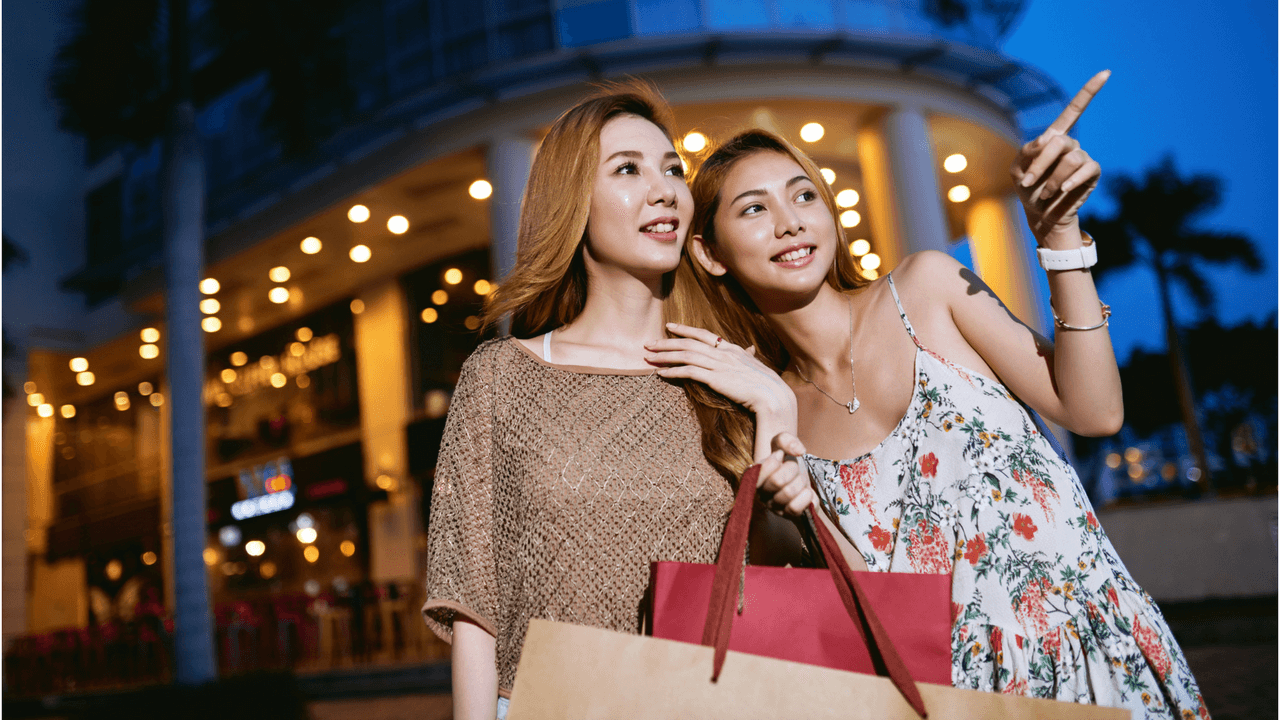- Design industry shaping loyalty programs
- Integrate easily and go live quicker
- Deliver hyper-personalized consumer experiences
Capillary acquires US-based Brierley+Partners Read more >
Capillary named a Leader in The Forrester Wave™: Loyalty Technology Solutions, Q1 2023 Report Read more >

At a time when Ecommerce is so competitive thanks to smartphone and internet penetration, the yesteryear model of retail, brick and mortar, is threatened. When products are available at the customer’s convenience at discounted rates, he is more likely to use the service as opposed to going to a store and buying it. Ecommerce companies typically encourage and enable consumerism through a combination of convenience and value. However, where pure-play online brands have a clear edge over offline stores is their ability to personalize customer interactions across the purchase cycle – from acquisition to fulfillment. On the other hand, offline stores have a tendency to provide a one-size-fits-all experience for the customers who walk in through their doors. If a brick and mortar store is to keep up with ecommerce companies and their hyper-personalization capabilities, the stores will need to start collecting, analyzing and leveraging customer data – In-store Personalization is the way to go!
This article is an in-store personalization guide for retailers to escalate their marketing strategy and bring in more revenue.
According to a report by Medallion Retail, 46% of shoppers will buy more from a retailer that provides a customer with a personalized shopping experience. This is another sure-fire way to convert a first-time customer into a returning customer and win his loyalty. Moreover, customers who shop online are used to this level of personalization and they expect a similar experience in a real-world situation as well.
A one-to-one retail experience is essential for retail personalization strategies. The key is to know enough about your customer’s information in the three tenses – past, present, and future.
The Medallion Retail report also points out an interesting insight – that customers prefer to be acknowledged in-store rather than via digital channels. While ecommerce companies may have access to a vast database of user information, it is entirely possible that a user can get irked by an ad that feels too personal or invasive. In this way, in-store personalization is a good way to make a human connection with your customer and make him/her feel they are cared for. It is important to train your staff in such a way that they are well equipped to handle your customers’ needs. In this way, in-store personalization sets the stage for an offline business’ omni-channel marketing success. It is the final step that works in collaboration with other steps such as loyalty programmes and online shopping options in order to make the omnichannel marketing program a successful one.
From a brand’s point of view, in-store personalization can bring tangible results to a business in terms of higher customer engagement and conversion. A report by Infosys states that 59% of consumers who have experienced personalization believe it has a noticeable influence on purchasing decisions. The same report also states that a whopping majority of 92% of the consumers who are in a store, look to discover new products and are open to making impulse purchases even if it’s not on the agenda. In fact, consumers are three times more likely to make an impulse buy in-store rather than while shopping online.
Access to data such as email IDs and brand preferences enable a business to tailor marketing efforts to suit their customers tastes. Beyond the marketing messages themselves, knowing what a consumer prefers enables a marketer to speak in the same language as the consumer – making the marketing exchange conversational and more personalized.
It is much more economical for a business to retain an existing customer than to acquire a new one. Taking the efforts to personalize the retail experience for a customer increases the chances of an incidental customer becoming a returning customer who is eventually loyal to your business and your brand. The end goal of a marketer is customer retention. Personalization is a powerful way of building upon the relationship that a customer has with a business and it contributes towards retention efforts in the long run.
Knowing a customer’s preferences enables a brand to create content that resonates with its customers. It could be content for email newsletters, or content for an ad copy or a simple post purchase ‘Thank you’ card. For example, if a marketer has the knowledge that their target audience likes science fiction movies, then it becomes easier for him to create content in such a way that the target audience finds it relatable. Once he does, you have grabbed your customer’s attention and increase the chance that he/she will share it with her friends/followers in the digital universe. Smart offline retailers are also using these digital data to further personalize the in-store experience for their customers.
Customers are more likely to associate with a brand and turn into returning customers if they interact with the brand both online and offline. 89% of buyers surveyed in the Infosys survey admitted that interacting with brands has some impact on their purchasing habits. Traditional retailers who are able to connect the online personas of their customers (eg:-across social media, website, and app) with in-store browsing behaviour will be in a position to offer hyper-personalized engagement across offline and online channels.
We live in a world that’s densely populated with screens. In such a situation, there tends to be an information overload from brands who are trying to make their digital presence felt. When this is the case, brick and mortar retail stores have the advantage of getting the customer’s full and undivided attention in the store.
The major advantages that brick and mortar stores enjoy over their online peers are : tactile experience, human interaction and higher Average Order Values (AOV). To stay ahead and be relevant, retail stores will need to understand how to leverage each of these strengths. Of these, higher Order Values is something that can be greatly enhanced through personalized recommendations based on the customer’s previous purchases and in-store behaviour data collected through movement, dwell time and voice/sentiment analysis.
Once you have a pulse on your customer’s preferences, tastes, and requirements, then you will be better placed to accurately deliver what they require. Knowing exactly what your customers need also puts you in a position to deliver marketing messages of utility that they do not ignore. A retailer can also extensively use technology in order to create a personalised experience for the customer. The store can equip itself with augmented reality technology so that the customers can try on items in real time.
A store can also use an AI-powered footfall counter in order to increase store conversion and sales. These in-store vision tools help a business unlock powerful retail insights about customer demographics, store conversion ratio and the impact of marketing campaigns. Capillary’s VisitorMetrix is a 95% accurate people counter that’s equipped with an intelligent people tracking system to capture age and gender demographic data in real-time. This data can further be used to personalize the in-store experience for the customer. Ecommerce platforms have access to these insights and therefore deliver tailor-made ads but with VisitorMetrix, the insights it gives you can empower your business to optimise store inventory and predict customer preferences in order to maximize sales and conversions.
It is important that your sales staff is equipped to create a personalized in-store experience for your customers. VisitorMetrix can help you optimize staff strength and set conversion goals based on store footfall data. In-depth footfall analytics can also be used to schedule staff breaks and store maintenance at the ideal time in order to prevent losses and loss in sales.
Starbucks has a robust loyalty program that is personalized according to the users preferences and serves his needs. The loyalty program also comes with perks such as personalized offers for customers using the app and a free beverage on their birthday. Starbucks has access to customer data thanks to its loyalty app. People are comfortable sharing their data via the app as they are aware of the kind of rewards it can yield. It’s a win-win situation for the business and for the customers.
Even though Macy’s is a department store that was first opened in 1858, they have quickly adapted their retail strategy to suit the digital age. Macy’s extensively uses big data to offer a smarter customer experience. They analyse multiple data points such as stock levels and price promotions. The analysis of these data points are further combined with stock keeping unit data for particular products at particular locations. Macy’s also closely studies customer data to ascertain which products sell well at which store location. They also study how frequently a customer visits a store and what style they purchase. This ensures that the products that they have in their stores suit the customer’s buying habits in each location. Using this data, Macy’s even offers incentives at the point of sale in addition to loyalty points and promotions. The data they collect also enable them to send directly targeted mail to their customers, hence enabling them to boost conversions.
When you are a Target customer, you will be assigned a guest ID number after you interact with the brand for the first time. That ID is used to store data that is related to customer demographics. This ranges from ethnicity to job history and it is used to track buying behaviour. Target realized that their consumer’s buying patterns remained largely unchanged unless a big event happens in their life – such as pregnancy. Target found that it could ascertain which of its customers were in their early stages of expecting a baby when they purchased things that they never previously considered – such as diaper bags or cocoa butter lotion. Once Target could ascertain those behaviours, it enabled them to provide their customers with special deals on baby-related items that were personalized and tailor-made to suit their requirements.
At a time when mall-based retailers are struggling to maintain numbers due to reduced footfalls, Abercrombie & Fitch is investing in their digital capabilities in order to ensure that they capture the millennial market. Abercrombie & Fitch are well known for their personalized email communications and their loyalty program. The retailer personalizes e-mails communications with the help of in-store and online data about styles and brands that the customers prefer and use. The retailer also encourages shoppers to use their mobile app and rewards their loyalty with loyalty points and other benefits.
The rise of Machine Learning and Big Data is expected to have major implications in the retail space, especially with regards to personalization and the in-store experience. Retailers will likely be able to enhance in-store personalization through advanced computer vision to see the profile of the customers who walk in and leverage voice analysis, emotional state and facial signals to predict the likelihood of a sale and probability of a repeat visit.

February 11, 2012 | 4 Min Read
Segmentation is not a new concept to retailers. Looking into

May 30, 2011 | 4 Min Read
Customer Engagement is the lifeline of retail and it has lon

January 20, 2014 | 4 Min Read
“Information will be the basis of competitive advantage so